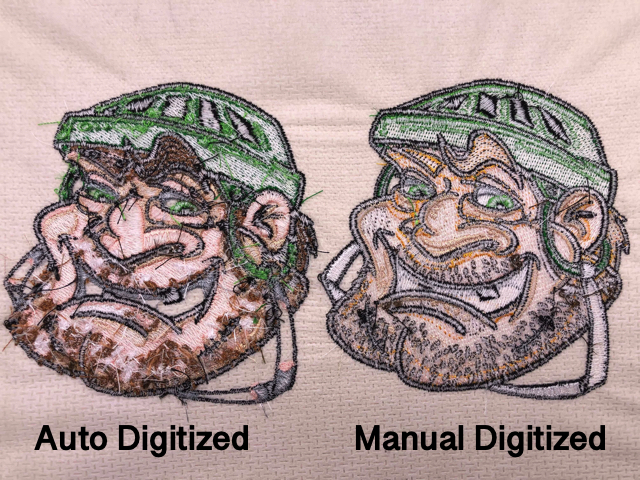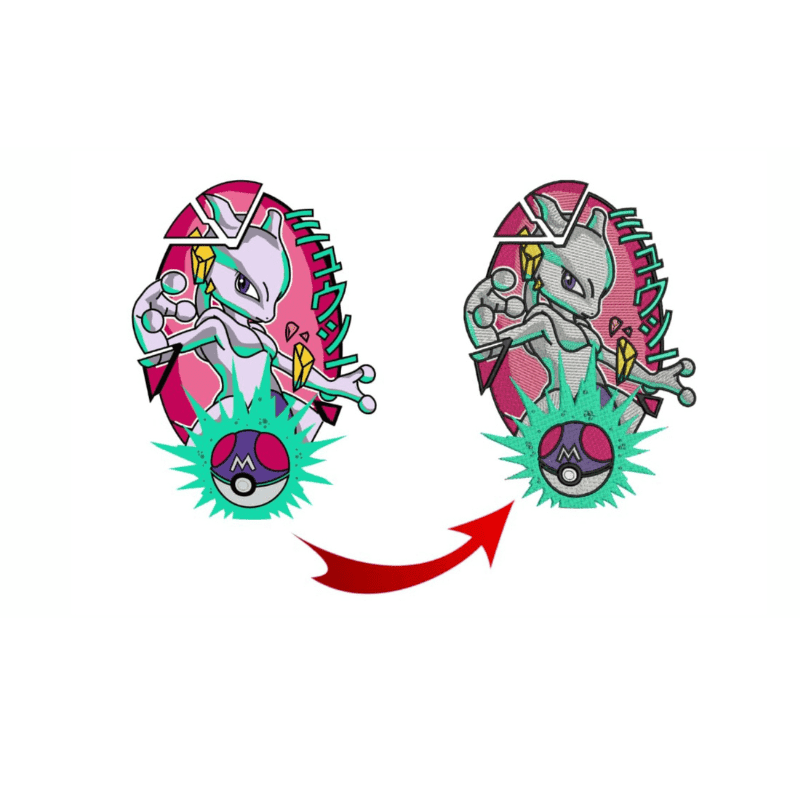Understanding the Needlework Digitizing Refine: Your Ultimate Overview
Embroidery digitizing is a meticulous craft that calls for precision and know-how to translate intricate designs right into electronic formats for maker needlework. As artisans get started on this trip to master the embroidery digitizing process, a detailed understanding of the essentials sets the structure for quality.

Comprehending Needlework Digitizing Basics
Needlework digitizing essentials develop the foundation whereupon intricate designs are translated right into machine-readable formats for specific sewing. This first action in the embroidery digitizing process is crucial for making sure that the final embroidered item is a devoted representation of the initial style. Understanding embroidery digitizing basics includes realizing vital principles such as stitch types, sew direction, density, underlay, and pull payment.
Sew types play an essential duty in identifying the visual and textural result of the stitched layout. By choosing the proper stitch type, whether it be satin, fill, or running stitch, digitizers can accomplish the wanted effect and improve the total quality of the embroidery. Furthermore, sew direction affects the flow and measurement of the style, while density figures out the spacing and protection of the stitches.
Furthermore, padding stitching gives security to the style by securing the fabric and avoiding distortion during the embroidery procedure. Draw settlement is another crucial consideration to combat the natural propensity of material to contract when stitched. Grasping these needlework digitizing basics is fundamental for developing professional-quality embroidered products.
Selecting the Right Digitizing Software
Picking the ideal digitizing software program is a critical choice that dramatically affects the efficiency and top quality of the embroidery digitizing process. Digitizing for Embroidery. When selecting the appropriate digitizing software program, it is necessary to consider elements such as the complexity of styles you plan to produce, the user-friendliness of the software, the level of client assistance used, and the compatibility with your embroidery maker
There are different digitizing software application choices available in the market, varying from fundamental programs for beginners to innovative software for expert digitizers. Some popular selections consist of Wilcom EmbroideryStudio, Hatch Embroidery Software Application, and PulseID. These software use a variety of devices and functions to help you create detailed layouts easily.
Before making a choice, it is advisable to explore the various software alternatives via complimentary trials or demos to determine which one ideal fits your requirements. Additionally, reviewing evaluations and looking for suggestions from skilled digitizers can provide beneficial understandings into the toughness and weak points of each software (Digitizing for Embroidery). By very carefully assessing your requirements and contrasting the attributes of different digitizing software, you can make an educated choice that boosts your embroidery digitizing operations
Digitizing Tools and Strategies

Optimizing Layout Settings for Needlework
Understanding the ins and outs of style settings is fundamental in attaining ideal results in the needlework digitizing procedure, building upon the foundation laid by comprehending digitizing tools and techniques. When optimizing design settings for needlework, it is important to basics take into consideration elements such as stitch kind, density, rug, draw payment, and registration. Sew type option impacts the general look of the style, with choices like satin, fill, and running stitches offering different appearances and impacts. Thickness describes the spacing and density of stitches, impacting the design's insurance coverage and sturdiness. Proper underlay stitching offers stability and avoids fabric distortion, specifically for intricate designs or on stretchy products. Draw payment changes for fabric stretch throughout stitching, guaranteeing exact style replication. Enrollment settings line up different aspects of the design properly, keeping overall layout integrity. By fine-tuning these layout settings, embroiderers can improve the quality and accuracy of their stitched developments.

Troubleshooting Common Digitizing Issues
When running into typical digitizing concerns during the embroidery procedure, it is important to recognize the origin and implement efficient remedies promptly. One typical trouble is stitch density issues, where stitches might be also dense, triggering the textile to tighten, or too sporadic, bring about gaps in the design. Readjusting the stitch thickness settings in the digitizing have a peek at this site software can assist solve this concern.
Another frequent difficulty is string breaks throughout the embroidery process. This can occur because of different factors such as incorrect tension settings, boring needles, or making use of low-grade string. Ensuring proper maintenance of the embroidery maker, consisting of normal needle adjustments and stress changes, can decrease the event of string breaks.
Moreover, design registration errors can result in misaligned elements within the needlework layout. Examining the layout placement in the digitizing software program and making essential changes prior to sewing can assist in avoiding this issue. By dealing with these common digitizing issues promptly and effectively, you can make certain a smoother needlework procedure and top quality completed products.
Final Thought
In conclusion, mastering the needlework digitizing procedure needs a strong understanding of the basics, the appropriate option of software application, and knowledge of tools and strategies. Maximizing style settings and repairing usual digitizing concerns are critical actions in guaranteeing top quality needlework outcomes. By complying with these actions carefully, one can accomplish accuracy and effectiveness in the digitizing process.